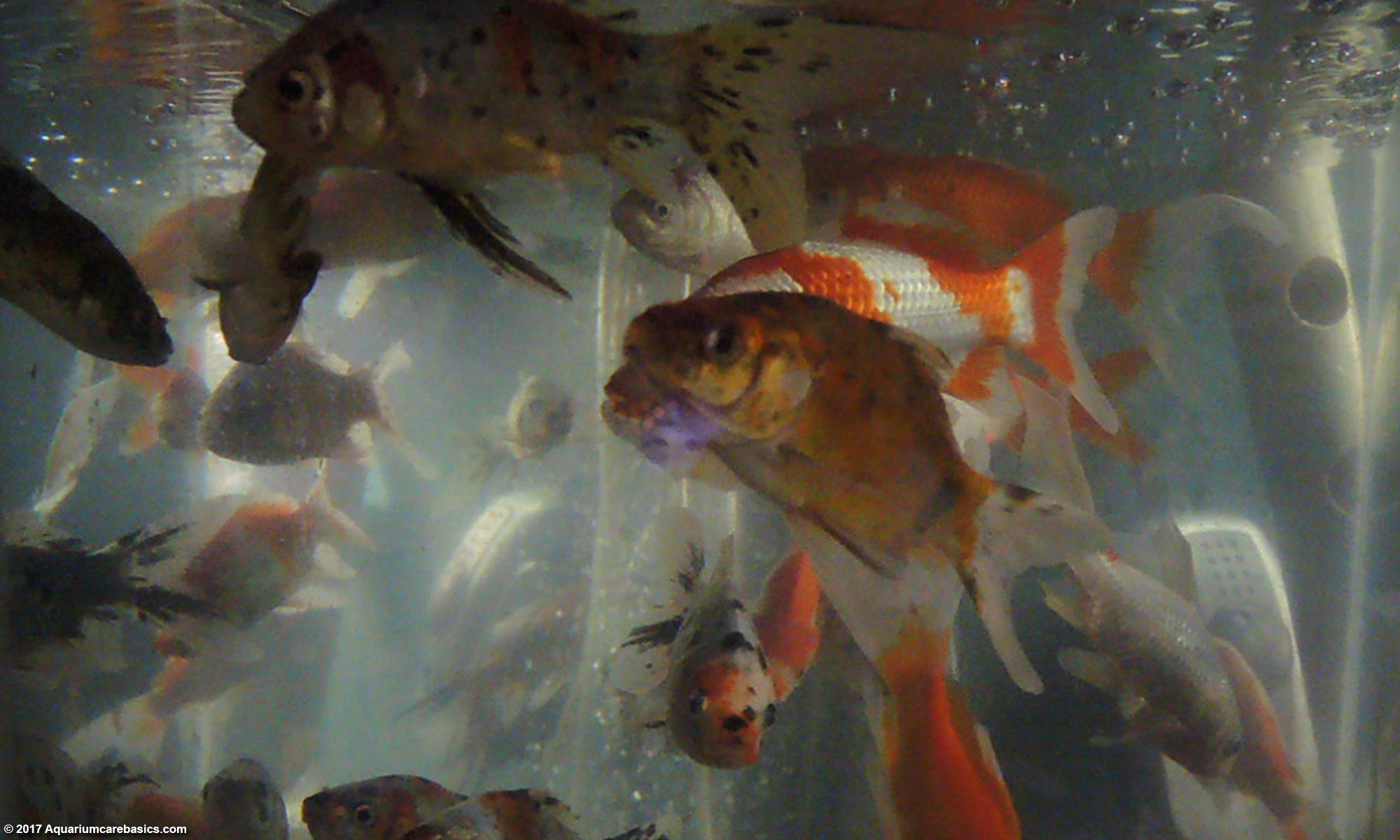Fish count is an important consideration related to aquarium size. Keeping fish count proportionate to the aquarium size, volume of the water, aquarium dimensions and the types of fish being kept is necessary to avoid overstocking your aquarium.
Determining Fish Count: Some Factors
Many people adhere to the fish count = one inch of fish per one gallon of water rule. While it’s best to error on the side of caution and stick to this rule, there are other factors including:
The amount of water actually in the aquarium
Characteristics of the fish species
The aquarium dynamic
Fish growth and reproduction
Water surface area, water surface agitation and filtering capacity.
And keep in mind that fish count is really not just about fish. Determining fish count needs to include any snails, clams, shrimp, crabs or anything other living organism in an aquarium. All life in an aquarium takes from the water and adds to the bio-load. So fish count is really not just about counting fish. Fish count includes counting everything living in a tank.
Gallons May Not Be Gallons
For the purposes of determining fish count, thinking of aquarium size in terms of “gallons” may not represent the actual amount of water in a tank. For example, filling an empty 20 gallon (long) tank with 20 gallons of water is one thing. But filling the same tank with water and accounting for gravel and decorations is another matter. Gravel and decorations reduce the amount of water in a tank. There are no hard and fast rules here because each aquarium setup is unique. But it may be a good idea to approximate a 10 to 15% reduction in water volume just to start the analysis.
Fish Species, Growth & Reproduction
Each fish species behaves differently and has different space needs. Some fish species are very aggressive and others are not. Other fish species are overly territorial and others could care less. And some fish species are messier than others, and some simply create more waste. The point is to research fish characteristics regarding territory and waste, and consider those factors when determining fish count. Greater attachment to territory should mean a lower fish count. Similarly, big waste producers and crazy mess makers add to the bio-load. The greater the waste generated, the lower the fish count should be.
Aquarium dynamic is also a very important consideration when calculating fish count. A tank with one inch of Otocinclus Catfish per gallon will be an entirely different aquarium dynamic than a tank with one inch of Striped Convicts per gallon. Research your fish species carefully to determine how they behave with each other to help determine fish count. Along these lines, mixing different combinations of fish species will create unique aquarium dynamics. A tropical community tank with a pair of Swordtails, some Black Mollies and a Cory Catfish is a completely different vibe than keeping a pair of Oscars, or a tank with aquarium crayfish. Also, account for fish compatibility when determining fish count as well. And tank-mate compatibility considerations aside, the more roughens in an aquarium, the lower the fish count should be.
Always keep in mind that the little Chinese Algae Eater just purchased is going to grow up to be a not-so-little Chinese Algae Eater. What seems to be a safe addition to an aquarium in the beginning may turn out not to be such a good idea after all. Researching to find out how big your fish will grow is a necessary component in determining fish count. Along these lines, keep in mind that many fish spawn in aquariums. Thinking ahead about reproduction is also very important. Be especially mindful of this point when adding snails like Malaysian Trumpet Snails.
Aquarium Water Surface Area & Air
Fish count should also be adjusted based upon the amount of aquarium water surface area contacting air. Aquarium water surface area determines the capacity of the tank to exchange oxygen and carbon dioxide gasses. Here, aquarium size and dimensions are big factors. Compare a 20 gallon high tank (24 x 12 x 16) with a 20 gallon long tank (30 x 12 x 12). Each contains 20 gallons of aquarium water, but the 20 gallon long tank has more aquarium water surface area in contact with air. The more aquarium water contacts air, the greater the rate of gas exchange in the tank. Therefore, lower aquarium water surface area means a lower fish count per gallon.
Filtration, aeration and aquarium water surface agitation are other important factors in determining fish count. Proper filtration should not be thought of as a way to increase fish count per se, but instead as a way to help maintain a healthy and stable aquatic environment all around.
Be sure to select a filter that is appropriate for the aquarium size and keeps the aquarium water surface moving slightly. The movement of surface water will help keep maintain the healthy exchange of gasses. Along these lines, a good air stone producing fine bubbles is beneficial in a couple a ways: the fine bubbles will increase the water surface area coming in contact with air, and the fine bubbles with also help with water surface agitation.
Avoid Overstocking
Finally, just because a fish store has a tank full of small Oscars in a 15 gallon display tank, and a tank full of small Jack Dempseys in the display tank next to it, that doesn’t mean that one should keep a tank like that at home.
No matter what the aquarium size, always think in terms of fish count and avoid overstocking…especially with fish that are not appropriate for that aquarium size in the first place.

